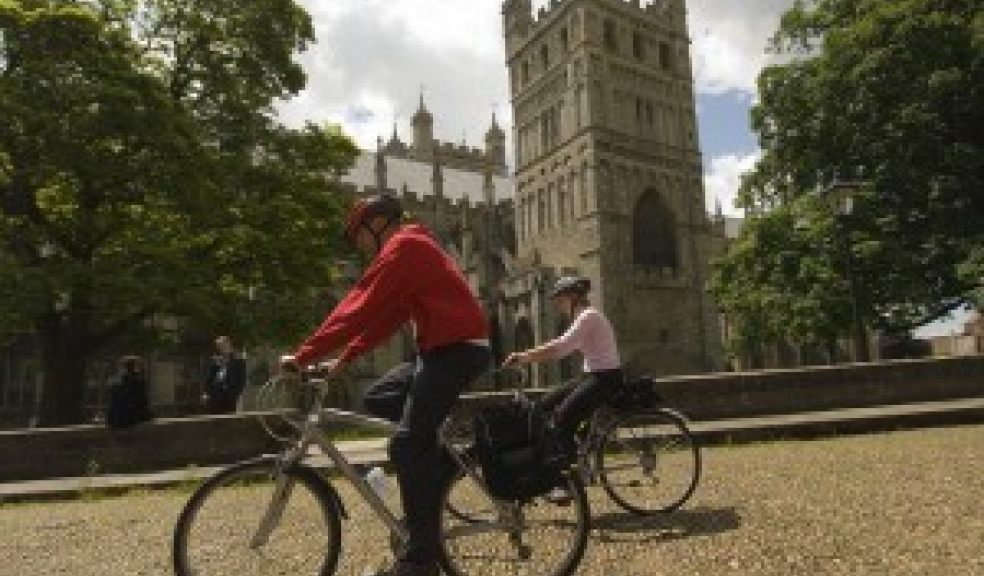
1,200 more commuters cycle in Exeter
Over 3,500 people in Exeter are now regularly cycling to work according to new figures released by the Office for National Statistics (ONS) today.
The ONS figures, recorded between 2001 and 2011, show that Exeter had one of the largest percentage increases outside of London with more than 1,200 more people now choosing to commute by bike in the City a growth of more than 50% .
The increase comes after a concerted effort by local councils to improve cycle investment in the city and the wider area including a £13.9 million investment programme to 2015 to continue development of key cycle routes by Devon County Council.
Zsolt Schuller, Devon County Council’s Strategic Sustainable Travel Officer, said: “Investing in cycling makes sense on so many levels. It improves health, its non-polluting, helps ease congestion in our built up areas and boosts the economy.
“There is a real momentum behind cycling and we’re pleased that the improvements made across Devon have been successful in getting more people cycling more often.”
These key routes include the construction of the Exe Estuary Trail which is expected to connect 80,000 more potential commuters to Exeter when completed next September.
Work on the final stretch of the Exe Estuary trail, between Turf Lock and Powderham is due to begin this month.
Councillor Stuart Hughes, Devon County Council Cabinet Member with responsibility for cycling, said: “This last piece of the jigsaw may have been a long time coming but it will certainly have been worth the wait once the trail is complete.
“The Exe Estuary Trail highlights why we’re a cycling county and there’s no doubt it will be a flagship route for our county. It has become one of the best ways to enjoy the spectacular views offered by the Exe Estuary.
“The Trail is attracting people to explore the area, which is good for local business, but it’s there for local people to enjoy as much as visitors.
“It provides communities along the route with the opportunity to cycle or walk on their journey to work or school as well as in their leisure time.”
Nationally the largest increase was, perhaps unsurprisingly, seen in London whose commuter cycling population grew by over 140% in the period.
Despite growth in cities such as Exeter overall cycling to work levels in England and Wales have remain unchanged since the study began indicating that in some areas cycling number have fallen offsetting the gains elsewhere.
Rachel Bromley, policy advisor for the UK cycling charity Sustrans, argues that the fall is due some council’s failing to support cycling provision in the period.
She said: “These new figures are telling of the haphazard approach of many authorities to get with the times and improve provision for the increasing number of people wanting to cycle to work.
“The public demand is there and many urban councils have made good progress in training and infrastructure as is shown by the outstanding urban cycling results. It shows when decision makers put their minds into increasing cycling, real progress can be made.
“Cycling is a silver bullet for Britain’s local transport needs through improving access, reducing congestion and tackling air pollution. The benefits to the individual are also huge as cycling is a great way to build physical activity into people’s daily routine.”













